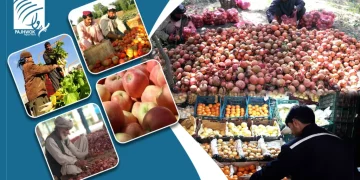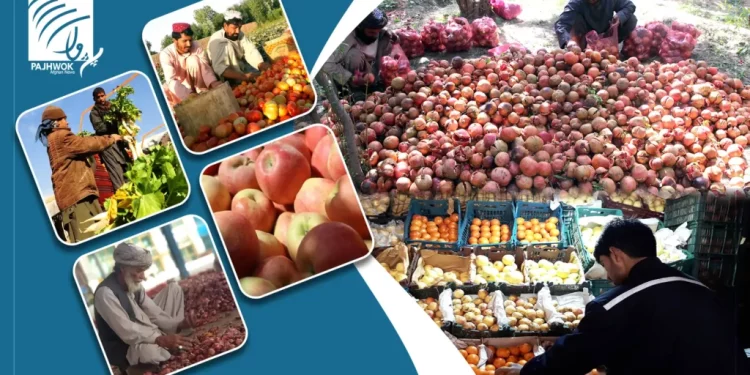#Agriculture #Afghanistan #ExportChallenges #ColdStorage #Farmers #AgriculturalDevelopment #MarketAccess #MinistryInitiatives
In a significant development for Afghanistan’s agricultural sector, the Ministry of Commerce and Industries (MoCI) recently reported a remarkable increase in fruit and vegetable exports during the first six months of the ongoing solar year. The figures reveal a substantial rise, with 18,097 tonnes of fresh fruits exported, marking a considerable jump from the 7,528 tonnes during the same period last year.
Despite this positive trend, farmers are grappling with challenges that threaten the sustainability of this growth. One prominent demand from the farming community is the urgent construction of cold stores to address the post-harvest losses experienced due to inadequate preservation facilities.
Afghanistan, where 70 percent of the population is associated with agriculture, has faced obstacles in basic development, especially the construction of standard cold stores. The consequences have been severe, with farmers losing a significant portion of their produce due to the absence of proper storage infrastructure.
Export Surges and Farmer Concerns:
Abdul Salaam Jawad Akhundzada, the MoCI spokesperson, highlighted that 12,092 tonnes of vegetables, primarily onion and Mash, were exported during the first six months of the current year. However, farmers like Abdul Jameel from Bamyan province expressed concerns about declining yields, linking it to the lack of water resources and market access. The export of potatoes, a key produce, faced challenges, impacting prices and reducing the volume of exports to neighboring countries.
Similar sentiments were echoed by Mohammad Saleh from Bamyan province and Khaliq Dad from Kandahar province, emphasizing the need for attention not only to export promotion but also to the construction of cold stores.
Orchard Owners and Market Challenges:
Ahmad Ameeri, an apple orchard owner in Maidan Wardak province, emphasized the importance of cold storage for fruit preservation. Despite good yields, the absence of proper facilities has affected the export of apples, particularly to India, where fewer exporting companies are operational due to extended dispatch times.
Akhtar Mohammad Ahmadi, head of the Fresh Fruits and Vegetables Businessmen Union, shed light on the challenges faced by agriculture products sold on roads at lower prices due to the absence of proper markets and cold stores.
Ministry’s Response and Future Prospects:
The MoCI spokesperson acknowledged the challenges and outlined efforts to promote agriculture product exports. He highlighted the creation of facilities, such as the export of cherries to India in refrigerated trucks. Efforts are underway to explore new markets for Afghan products, including signing a pomegranate export contract with Russia.
Regarding the construction of cold stores, the spokesperson stated that 14 standard cold stores exist in the country, and initiatives are in progress to reconstruct non-functional or semi-functional ones. The goal is to become self-sufficient in storage facilities, ensuring timely supply to markets.
While Afghanistan experiences a notable increase in agricultural exports, challenges persist, necessitating a comprehensive approach that includes the construction of cold stores, market accessibility, and international cooperation. The path to self-sufficiency in storage facilities and resilient agricultural exports requires collaborative efforts from both the government and the farming community.































